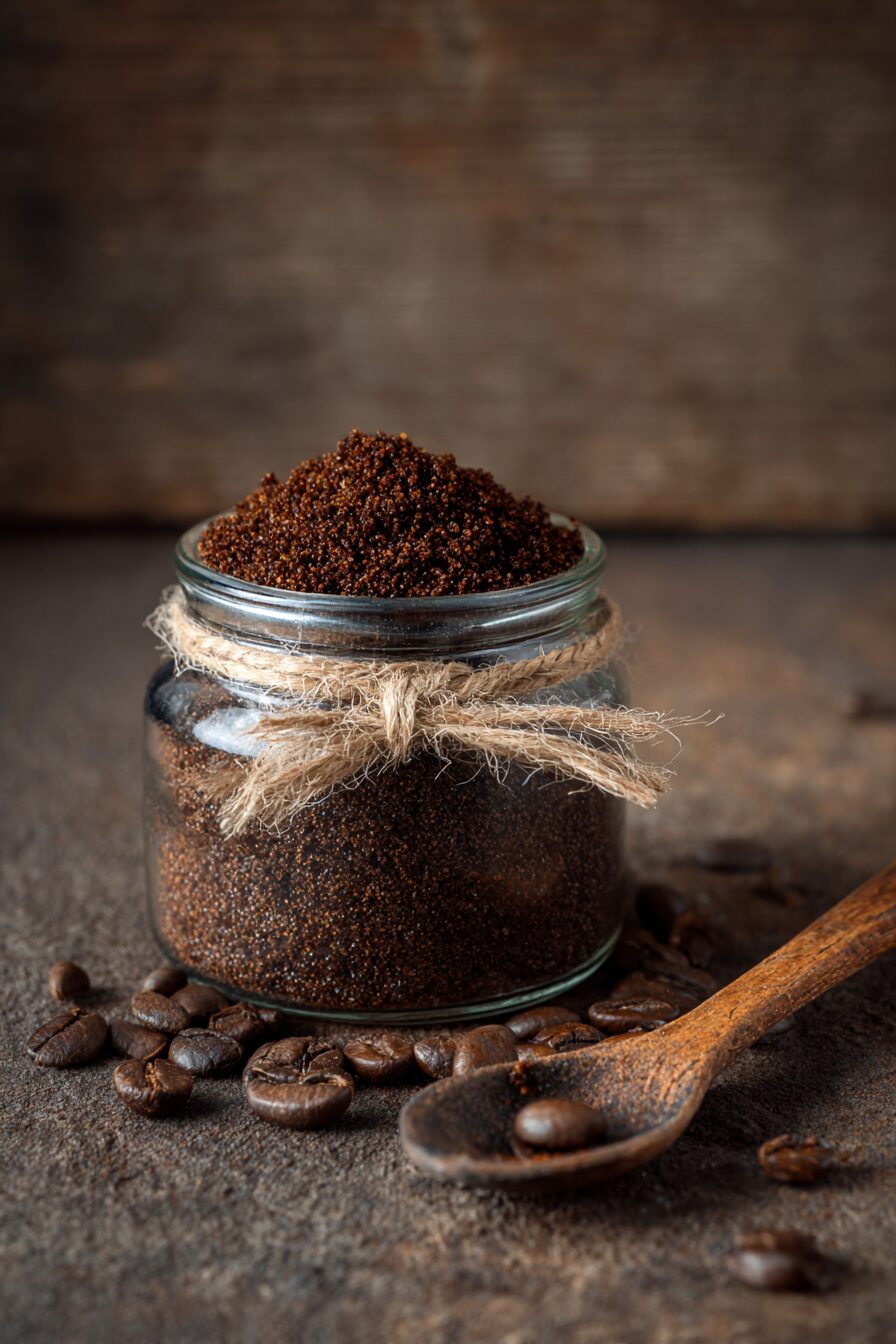Nothing ruins your morning coffee ritual quite like a swarm of tiny gnats buzzing around your face.
These pesky little invaders seem to multiply overnight, turning your once-peaceful kitchen into a miniature battlefield.
The good news?
You don’t need to call an exterminator or resort to harsh chemicals to win this war.
With the right strategies and a bit of persistence, you can reclaim your kitchen and send those gnats packing for good.
Create an Apple Cider Vinegar Death Trap
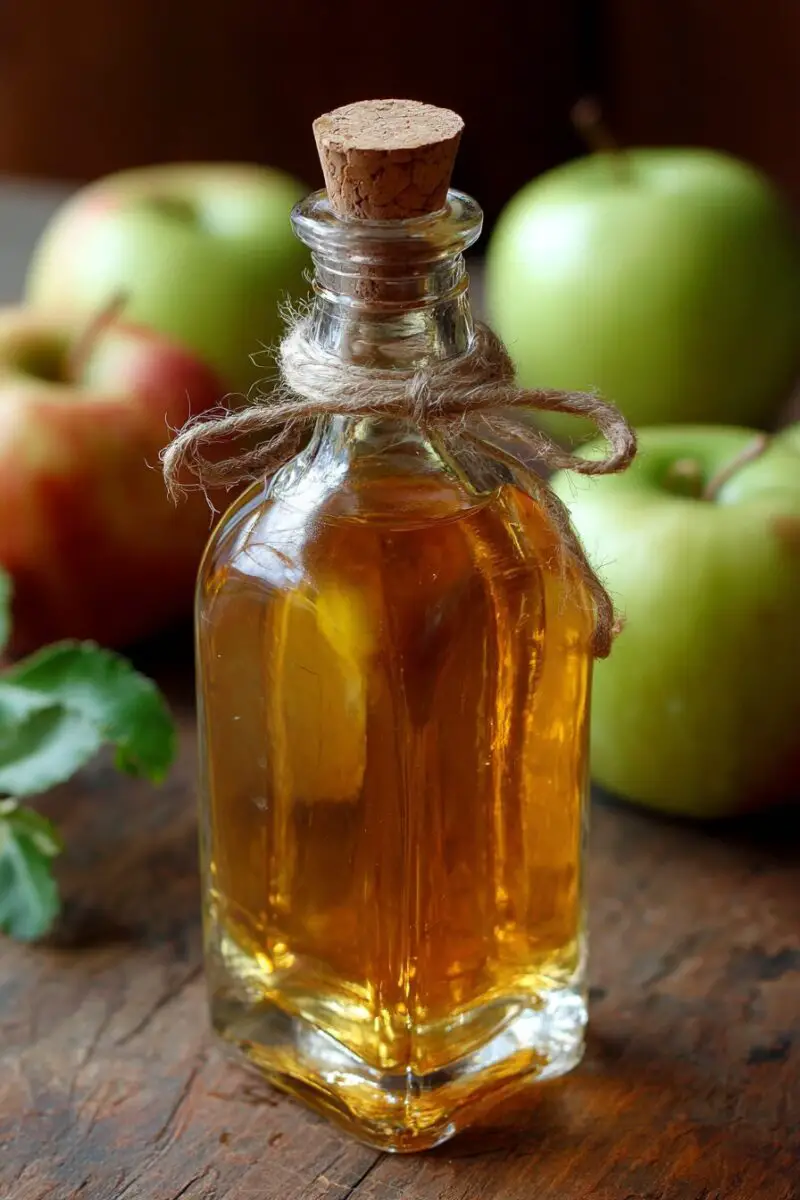
Apple cider vinegar acts like a gnat magnet, drawing these tiny pests to their doom with an irresistible scent they simply can’t ignore.
The fermented smell triggers their natural attraction to rotting organic matter, making this trap incredibly effective for fruit flies and fungus gnats alike.
Start by grabbing a small bowl or jar and filling it about halfway with apple cider vinegar.
Add a drop or two of liquid dish soap to break the surface tension, which prevents gnats from simply landing on the surface and flying away.
The soap causes them to sink and drown instead of escaping.
Cover the container tightly with plastic wrap, then use a toothpick to poke several small holes in the surface.
The holes should be large enough for gnats to enter but small enough to make escape difficult.
Place your trap near areas where you’ve noticed the most gnat activity, such as near your fruit bowl, garbage disposal, or houseplants.
You’ll start seeing results within hours, and the trap will continue working for several days.
Change the vinegar mixture every few days to maintain its effectiveness, especially if it becomes cloudy or filled with dead insects.
This method works particularly well because gnats are naturally drawn to the acidic, fruity scent of fermented apple cider vinegar.
The beauty of this trap lies in its simplicity and the fact that you probably already have these ingredients in your kitchen.
For maximum effectiveness, set up multiple traps around your kitchen, focusing on problem areas where gnats tend to congregate.
Set Up a Soapy Water Ambush
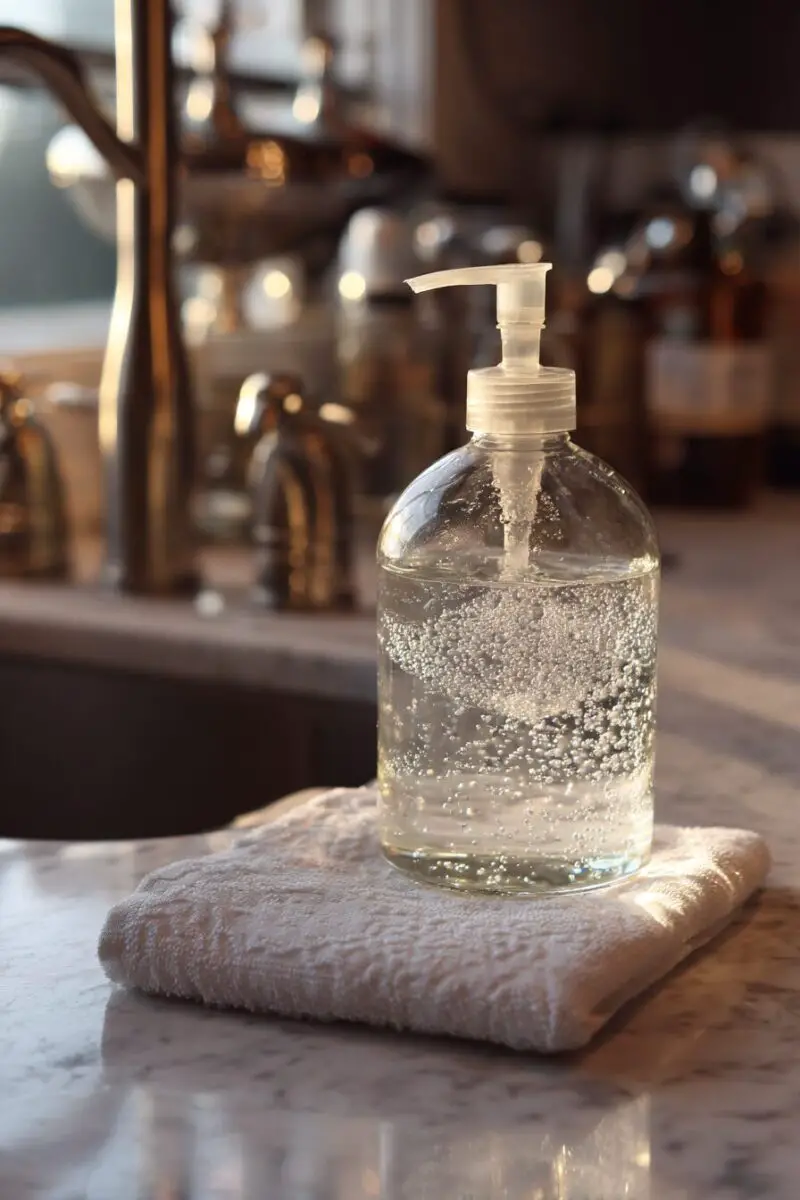
Dish soap creates a deadly combination when mixed with water, forming a trap that gnats can’t resist but can’t survive.
The soap reduces the water’s surface tension, causing gnats to break through and drown immediately upon contact.
Fill a shallow dish with warm water and add several generous squirts of liquid dish soap.
Stir the mixture gently to distribute the soap evenly without creating too many bubbles on the surface.
The goal is to create a solution that looks appealing to gnats while being lethal upon contact.
Place these soapy traps in strategic locations throughout your kitchen, particularly near sinks, drains, and areas with standing water.
Gnats are naturally attracted to moisture, so they’ll gravitate toward these water sources without realizing the danger.
This method works exceptionally well for drain flies and other moisture-loving gnats that breed in damp environments.
The soap essentially acts as a surfactant, breaking down the water’s ability to support the gnats’ lightweight bodies.
Refresh your soapy traps daily by dumping out the old mixture and creating a fresh one.
This ensures maximum effectiveness and prevents the water from becoming stagnant or developing an unpleasant odor.
You can enhance this trap’s appeal by adding a small amount of fruit juice or sugar to the mixture.
The sweet scent will draw even more gnats to their watery grave.
Position multiple traps around your kitchen for comprehensive coverage, and you’ll notice a significant reduction in gnat activity within 24 to 48 hours.
Design Your Dream Room in Minutes!
🏡 Start Creating FREE →Deploy the Wine Bottle Trick

Wine creates an incredibly effective gnat trap using something you might otherwise throw away after dinner.
The fermented grapes produce an aroma that gnats find absolutely irresistible, luring them into a container they can’t escape from.
Save an empty wine bottle and leave about an inch of wine in the bottom, or add a small amount of red wine to a clean bottle.
The residual wine provides the perfect bait, as gnats are naturally drawn to fermented sugars and alcohols.
Create a paper funnel by rolling a piece of paper into a cone shape, leaving a small opening at the narrow end.
Insert the funnel into the wine bottle’s neck, ensuring the narrow end doesn’t touch the wine but hovers just above it.
Tape the funnel securely to the bottle’s rim to prevent gnats from escaping through gaps.
The funnel design allows gnats to enter easily but makes it nearly impossible for them to find their way back out.
Place your wine bottle trap in areas where gnats are most problematic, such as near your garbage can or fruit storage area.
The confined space of the bottle means gnats will become trapped and eventually die from inability to escape.
This method is particularly effective against fruit flies, which are strongly attracted to fermented beverages.
You can leave the trap active for several days, adding more wine if the level gets too low.
The narrow neck of the bottle serves as a natural one-way entrance, making this trap incredibly efficient.
Clean and reuse the bottle trap as needed, or set up multiple bottles for larger infestations.
TRENDING NOW
13 Small Modern Kitchen Designs You'll LoveHarness the Power of Essential Oils

Essential oils provide a natural, chemical-free approach to gnat control while filling your kitchen with pleasant aromas.
Certain oils contain compounds that gnats find repulsive, creating an invisible barrier that keeps them away from treated areas.
Peppermint oil ranks among the most effective gnat deterrents due to its strong menthol content.
Mix 10-15 drops of peppermint oil with one cup of water in a spray bottle.
Shake the mixture thoroughly before each use to ensure the oil disperses evenly throughout the water.
Spray this solution around windowsills, doorframes, and areas where gnats typically enter your kitchen.
Lemongrass oil offers another powerful option, as its citrusy scent disrupts gnats’ ability to locate food sources.
Create a similar spray using lemongrass oil, or combine multiple oils for enhanced effectiveness.
Eucalyptus oil works by interfering with gnats’ respiratory systems, making treated areas uncomfortable for them to inhabit.
Soak cotton balls in your chosen essential oil and place them strategically around your kitchen.
Focus on areas near garbage cans, drains, and houseplants where gnats commonly gather.
Replace the cotton balls every few days as the oils evaporate and lose their potency.
You can also add essential oils to your regular cleaning solutions for ongoing gnat prevention.
This method provides long-term protection while maintaining a fresh, natural scent in your kitchen environment.
Attack Their Breeding Ground in Your Drains
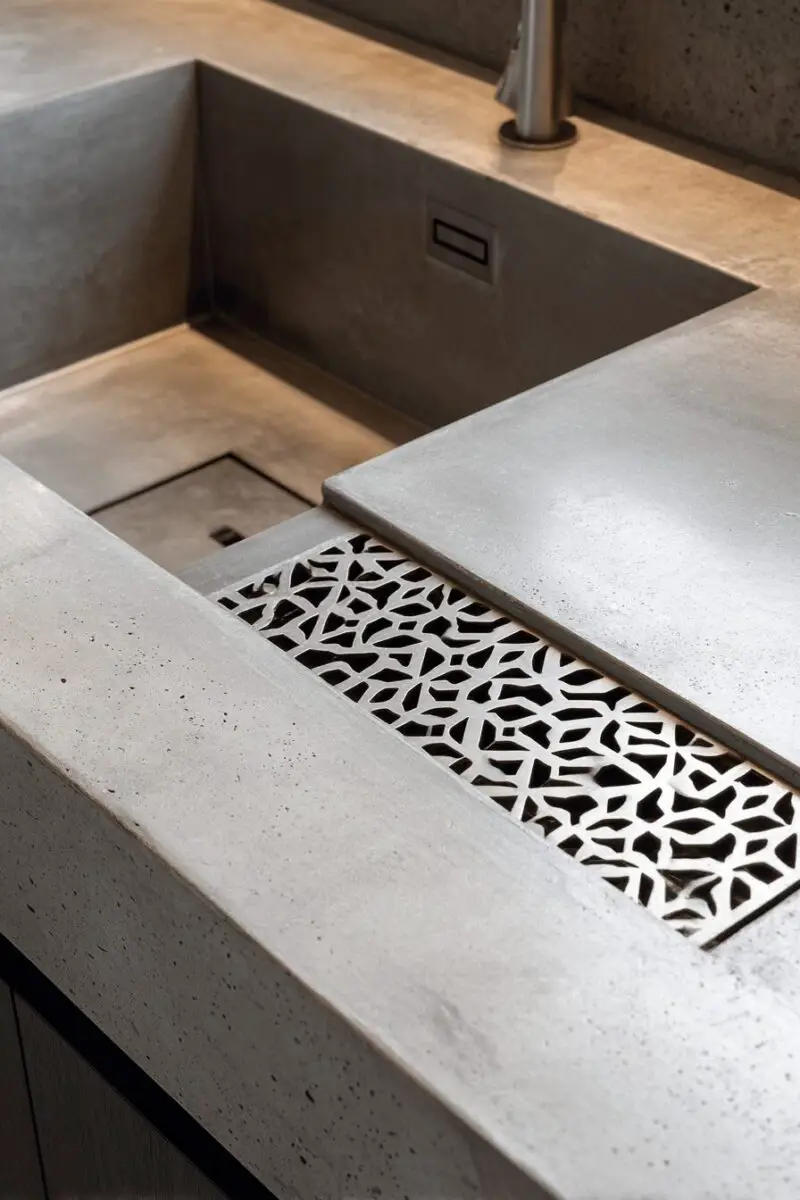
Drains serve as perfect breeding grounds for gnats, providing the moisture, organic matter, and undisturbed environment they need to multiply rapidly.
Most homeowners overlook this critical area, allowing gnats to establish thriving colonies right under their noses.
Start by removing any visible debris from your drain openings, including food particles and hair that might be caught in the drain cover.
Pour a kettle of boiling water down each drain to kill any eggs or larvae that might be developing in the pipes.
The extreme heat destroys gnats at every stage of their lifecycle, from eggs to adults.
Follow the boiling water with a mixture of baking soda and white vinegar to create a foaming action that scrubs away organic buildup.
Use about half a cup of baking soda followed by half a cup of vinegar, then cover the drain with a plug or cloth to contain the reaction.
Allow this mixture to work for at least 15 minutes before flushing with more hot water.
The chemical reaction helps break down the biofilm and organic matter that gnats feed on.
Repeat this process weekly to prevent future infestations and maintain clean, gnat-free drains.
Pay special attention to garbage disposal drains, as food particles often accumulate in these areas.
Run your garbage disposal regularly with cold water to keep it clean and prevent organic buildup.
You can also pour enzyme-based drain cleaners down your drains monthly for ongoing maintenance.
These biological cleaners break down organic matter naturally without harsh chemicals.
TRENDING NOW
13 Creative Kitchen Towel Craft Ideas You Must TryEliminate Their Food Source by Managing Fruit

Overripe and rotting fruit acts like a beacon for gnats, drawing them from far and wide into your kitchen.
These tiny pests can detect the fermentation process from impressive distances, making fruit management crucial for gnat control.
Store all ripe fruit in your refrigerator rather than leaving it out on counters or in decorative bowls.
The cold temperature slows down the ripening process and eliminates the warm, fermenting conditions that gnats love.
Check your fruit daily for signs of overripening, soft spots, or damage that might attract gnats.
Remove any questionable pieces immediately, either by consuming them quickly or disposing of them properly.
When you do dispose of overripe fruit, seal it in a plastic bag before putting it in your garbage can.
This prevents the fermenting smell from escaping and continuing to attract gnats to your kitchen.
Clean your fruit storage areas regularly with a mild bleach solution to eliminate any residual organic matter.
Pay special attention to areas where fruit juice might have dripped or where small pieces might have fallen.
If you prefer to keep some fruit on display, choose items that ripen more slowly, such as apples or citrus fruits.
Bananas and stone fruits ripen quickly and should be refrigerated once they reach your desired ripeness level.
Wash all fruits thoroughly when you bring them home from the store to remove any eggs that might already be present.
Some gnats lay their eggs on fruit while it’s still in the store, so washing provides an important first line of defense.
Address Moisture Problems Throughout Your Kitchen
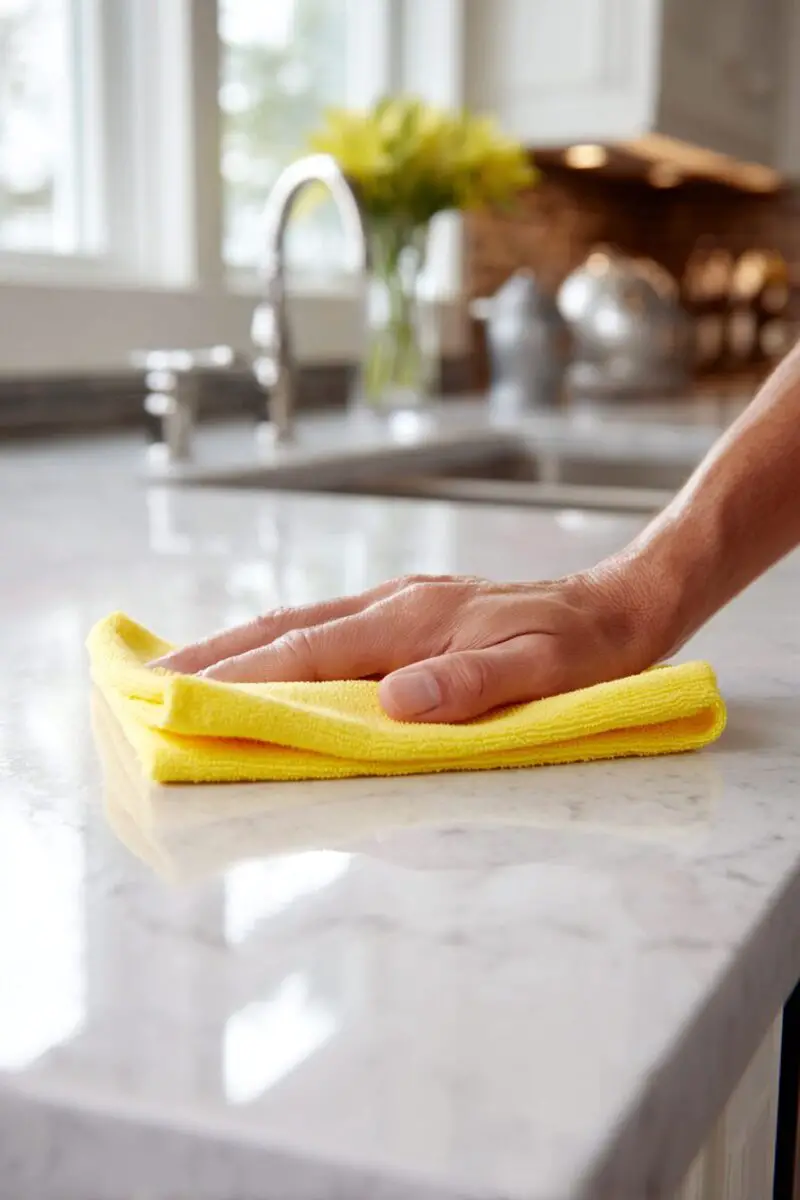
Excess moisture creates the perfect environment for gnats to thrive and reproduce, making humidity control essential for long-term pest management.
Gnats require moisture for both drinking and breeding, so eliminating water sources significantly reduces their ability to establish colonies.
Check under your sink for any leaks in pipes, faucets, or garbage disposal connections.
Even small drips can create the moist conditions that gnats need to survive and multiply.
Repair any leaks immediately and ensure the area stays dry by wiping down surfaces regularly.
Fix any caulking around sinks, windows, or other fixtures that might allow moisture to accumulate in hidden areas.
Improve ventilation in your kitchen by using exhaust fans during and after cooking to reduce humidity levels.
Steam from cooking creates ideal conditions for gnats, so removing this moisture quickly helps prevent infestations.
Clean up spills immediately rather than allowing them to sit and create damp spots on counters or floors.
Pay special attention to areas around your dishwasher, as this appliance can create significant moisture if not properly sealed.
Check the rubber seals around your dishwasher door and replace them if they’re damaged or worn.
Ensure your kitchen has adequate airflow by opening windows occasionally or running ceiling fans to circulate air.
Stagnant, humid air creates perfect conditions for gnat breeding and survival.
Use a dehumidifier in your kitchen if you live in a particularly humid climate or if moisture seems to be a persistent problem.
TRENDING NOW
Classic Charm: 13 Retro Kitchen InspirationsDeploy Sticky Traps for Maximum Coverage
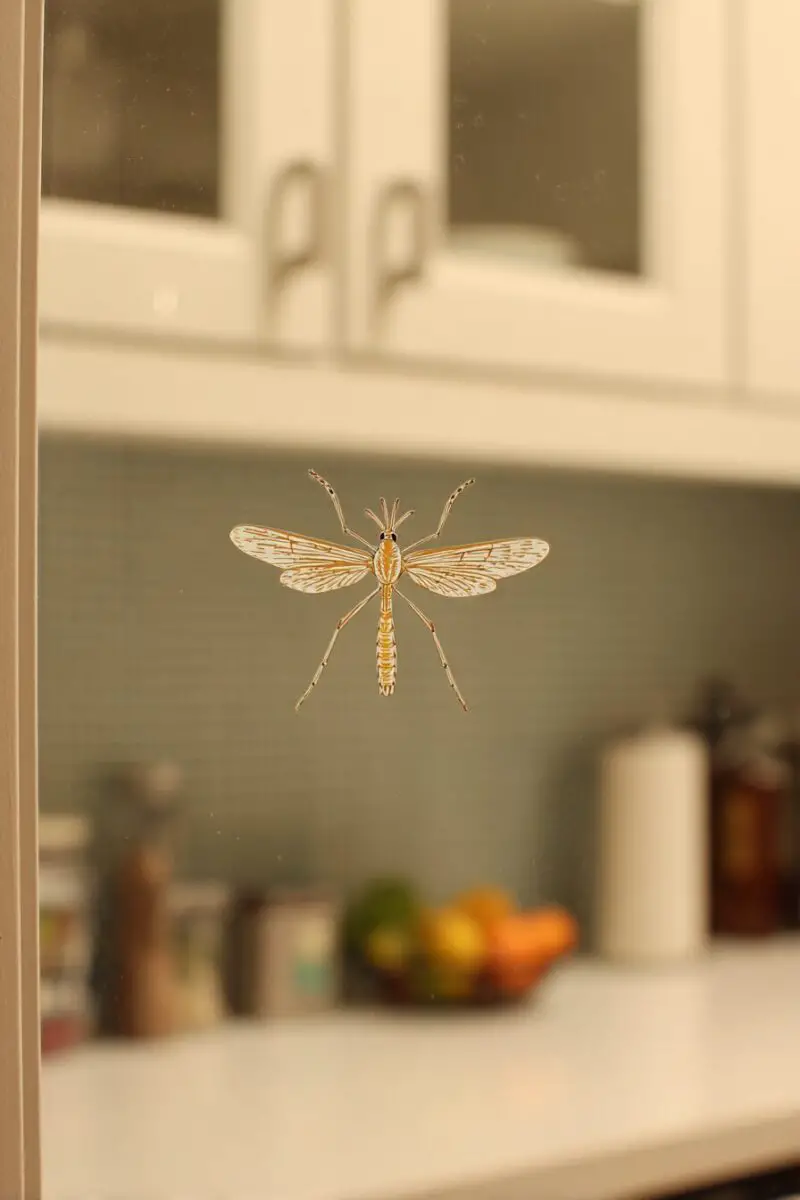
Sticky traps provide an excellent supplementary method for capturing gnats while helping you identify their primary travel routes and congregation areas.
These traps work by using bright colors and sweet scents to attract gnats, then trapping them on adhesive surfaces they can’t escape from.
Yellow sticky traps prove most effective for gnats, as this color strongly attracts flying insects.
Purchase commercial sticky traps from your local hardware store or garden center, choosing ones specifically designed for flying insects.
Place these traps near windows, as gnats are naturally drawn to light sources and often congregate in these areas.
Position additional traps near houseplants, as fungus gnats particularly love the moist soil around potted plants.
Hang traps at varying heights throughout your kitchen to capture gnats at different flight levels.
Some gnats fly close to surfaces while others prefer higher altitudes, so multiple levels increase your capture rate.
Replace sticky traps regularly as they become covered with insects or lose their adhesive properties.
Most traps remain effective for several weeks under normal conditions, but heavy infestations may require more frequent replacement.
You can enhance commercial traps by adding a small amount of fruit juice or apple cider vinegar to increase their attractiveness.
Place a few drops on the trap’s surface, being careful not to reduce the adhesive’s effectiveness.
Monitor your traps daily to gauge the effectiveness of your overall gnat control strategy.
Heavy trap activity indicates you may need to intensify other control methods or identify additional breeding sources.
Use Coffee Grounds as a Natural Deterrent
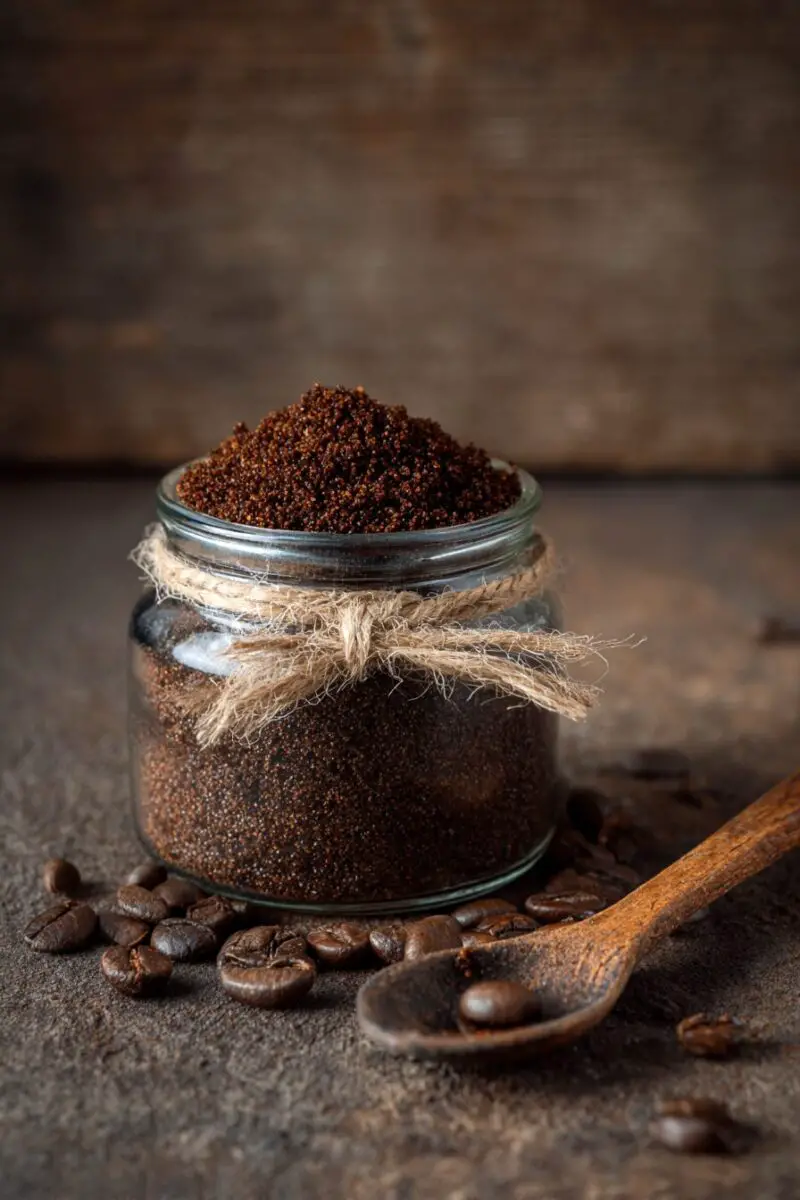
Coffee grounds serve a dual purpose in gnat control, acting as both a deterrent and a way to improve your houseplant soil while fighting pests.
The caffeine in coffee grounds is toxic to many insects, including gnats, making it an effective natural pesticide.
Save your used coffee grounds instead of throwing them away, allowing them to dry completely before use.
Wet coffee grounds can actually attract gnats by creating additional moisture, so proper drying is essential.
Spread a thin layer of dried coffee grounds on the soil surface of your houseplants.
This creates a barrier that gnats find difficult to penetrate when trying to lay eggs in the soil.
The rough texture of coffee grounds also makes it harder for gnats to access the moist soil they prefer for breeding.
Replace the coffee grounds every few weeks as they break down and lose their effectiveness.
You can also sprinkle coffee grounds around areas where you’ve noticed gnat activity, such as near garbage cans or compost bins.
The strong smell of coffee masks other odors that might attract gnats to these areas.
Combine coffee grounds with other natural deterrents like cinnamon or diatomaceous earth for enhanced effectiveness.
These combinations create multiple barriers that gnats find increasingly difficult to overcome.
Avoid using too much coffee grounds, as excessive amounts can affect soil pH and potentially harm your plants.
A light dusting is sufficient to achieve the desired pest control effect while maintaining healthy plants.
This method works particularly well for fungus gnats that breed in houseplant soil.
Maintain Spotless Kitchen Surfaces

Clean surfaces eliminate the food sources and breeding sites that gnats need to survive and reproduce in your kitchen environment.
Even tiny crumbs and spills can provide enough sustenance for entire gnat colonies, making cleanliness your most powerful weapon.
Wipe down all countertops daily with a disinfectant cleaner that removes both visible debris and microscopic food particles.
Pay special attention to areas around appliances where crumbs and spills commonly accumulate unnoticed.
Clean behind and under small appliances like toasters, coffee makers, and microwaves where food debris often hides.
These hidden areas provide perfect breeding grounds for gnats if left uncleaned for extended periods.
Vacuum or sweep your kitchen floor daily to remove crumbs and organic matter that might attract gnats.
Don’t forget to clean under appliances and in corners where debris can accumulate over time.
Empty your garbage can frequently and clean the container itself with bleach solution to eliminate odors and residue.
Even small amounts of organic matter in garbage cans can support significant gnat populations.
Clean your sink thoroughly after each use, paying attention to the faucet area and any crevices where food particles might lodge.
Gnats are attracted to any organic matter, no matter how small or seemingly insignificant.
Sanitize cutting boards, knife blocks, and other food preparation surfaces that might harbor bacteria or organic residue.
These items can become breeding grounds if not properly maintained and cleaned regularly.
Store all food items in sealed containers to prevent gnats from accessing potential food sources.
Getting rid of kitchen gnats doesn’t have to be a frustrating, never-ending battle.
With these proven methods in your arsenal, you can tackle any gnat invasion and keep your kitchen pest-free year-round.
Remember that consistency is key – combine multiple approaches for maximum effectiveness and maintain good kitchen hygiene to prevent future infestations.

